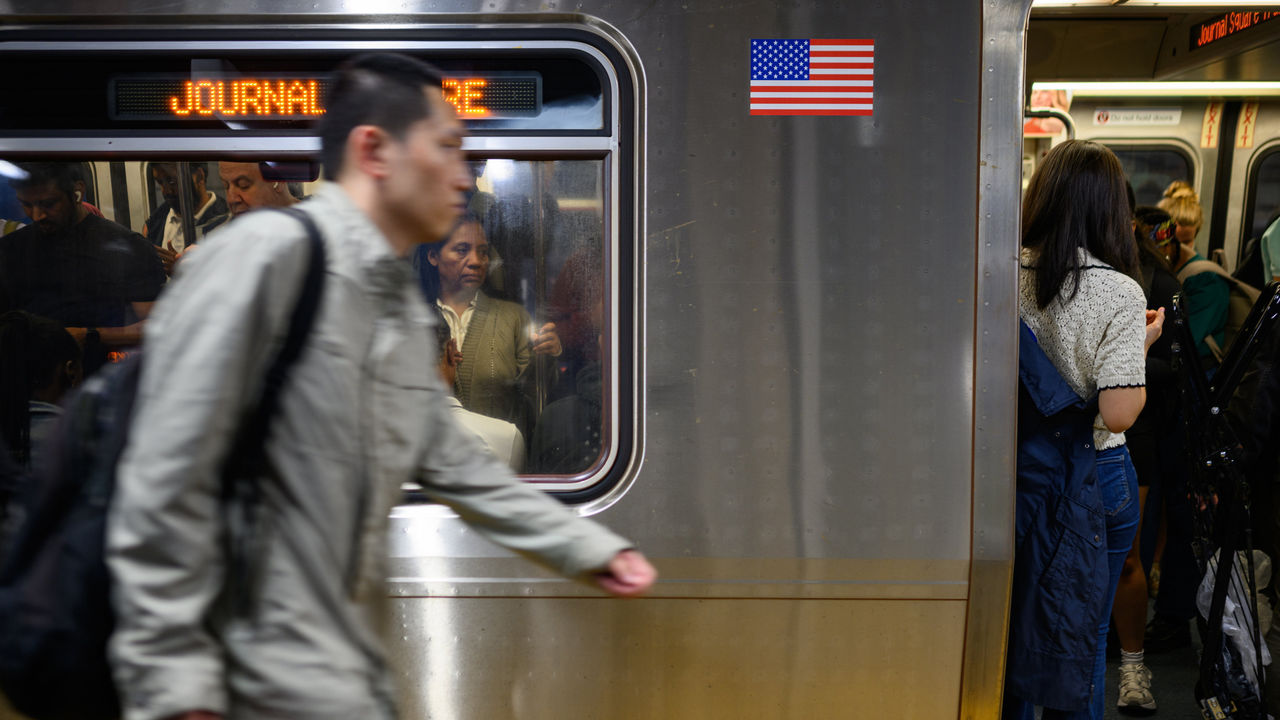Job Displacement Fears: Why AI Is Still Not A Job Stealer

Welcome to your ultimate source for breaking news, trending updates, and in-depth stories from around the world. Whether it's politics, technology, entertainment, sports, or lifestyle, we bring you real-time updates that keep you informed and ahead of the curve.
Our team works tirelessly to ensure you never miss a moment. From the latest developments in global events to the most talked-about topics on social media, our news platform is designed to deliver accurate and timely information, all in one place.
Stay in the know and join thousands of readers who trust us for reliable, up-to-date content. Explore our expertly curated articles and dive deeper into the stories that matter to you. Visit Best Website now and be part of the conversation. Don't miss out on the headlines that shape our world!
Table of Contents
Job Displacement Fears: Why AI is Still Not a Job Stealer
The rise of artificial intelligence (AI) has sparked widespread anxieties about job displacement. Images of robots taking over human roles dominate headlines, fueling fears of mass unemployment. But is this fear justified? The reality is far more nuanced. While AI is undeniably transforming the workplace, the narrative of AI as a wholesale job stealer is misleading and, frankly, inaccurate.
This article will explore the complexities of AI's impact on the job market, debunking common myths and highlighting the opportunities it presents. We'll examine how AI is augmenting human capabilities, creating new job roles, and reshaping existing industries rather than simply eliminating them.
AI: Augmentation, Not Annihilation
One of the most significant misconceptions surrounding AI is that it will automatically replace human workers. The truth is, AI is currently far more effective as a tool for augmentation than replacement. Think of it as a powerful assistant, capable of handling repetitive tasks, analyzing vast datasets, and automating processes – freeing up human employees to focus on higher-level, creative, and strategic work.
For example, in manufacturing, AI-powered robots handle assembly line tasks, increasing efficiency and reducing human error. However, these robots require human programmers, engineers, and technicians for maintenance, programming, and oversight. This highlights a crucial point: AI creates new jobs while transforming existing ones.
New Roles Emerge in the Age of AI
The rapid development of AI technologies is creating entirely new job categories. We're seeing a surge in demand for:
- AI specialists: Data scientists, machine learning engineers, AI ethicists, and AI trainers are all in high demand.
- AI-related support roles: These include roles such as AI project managers, AI compliance officers, and AI training specialists.
- Hybrid roles: Many existing roles are evolving to incorporate AI tools, requiring employees to develop new skills and adapt to working alongside AI systems. This necessitates ongoing training and upskilling initiatives.
The Skills Gap: A Key Challenge
While AI is not directly responsible for widespread job losses, it does exacerbate existing challenges. The skills gap – the mismatch between the skills employers need and the skills workers possess – is a significant concern. Many workers lack the skills necessary to thrive in an AI-driven economy.
Addressing this requires proactive measures:
- Investment in education and training: Governments and businesses need to invest heavily in reskilling and upskilling programs to equip workers with the skills needed for the jobs of the future.
- Lifelong learning: Individuals must embrace continuous learning and adapt to the evolving job market. This includes actively seeking out opportunities for professional development and acquiring new skills throughout their careers.
- Focus on human skills: While technical skills are important, uniquely human skills like creativity, critical thinking, emotional intelligence, and complex problem-solving will remain highly valued.
Conclusion: Embracing the AI Revolution
While anxieties surrounding AI-driven job displacement are understandable, it's crucial to approach the issue with a balanced perspective. AI is not a job-stealing monster, but a transformative technology with the potential to significantly improve productivity and create new opportunities. By focusing on education, reskilling, and the development of uniquely human skills, we can harness the power of AI to build a more prosperous and equitable future for all. The key is adaptation, embracing change, and focusing on collaboration between humans and AI. Learn more about the future of work by exploring resources from [link to a reputable source on future of work].

Thank you for visiting our website, your trusted source for the latest updates and in-depth coverage on Job Displacement Fears: Why AI Is Still Not A Job Stealer. We're committed to keeping you informed with timely and accurate information to meet your curiosity and needs.
If you have any questions, suggestions, or feedback, we'd love to hear from you. Your insights are valuable to us and help us improve to serve you better. Feel free to reach out through our contact page.
Don't forget to bookmark our website and check back regularly for the latest headlines and trending topics. See you next time, and thank you for being part of our growing community!
Featured Posts
-
 Animal Cruelty Charges Filed Against R And B Artist Jaheim In Georgia
May 29, 2025
Animal Cruelty Charges Filed Against R And B Artist Jaheim In Georgia
May 29, 2025 -
 Cool Temperatures And Intermittent Rain To Persist
May 29, 2025
Cool Temperatures And Intermittent Rain To Persist
May 29, 2025 -
 Nyt Connections May 27 2025 Answers 716
May 29, 2025
Nyt Connections May 27 2025 Answers 716
May 29, 2025 -
 La Influencer Angela Marmol Reaparece Con Un Nuevo Exito En Tik Tok
May 29, 2025
La Influencer Angela Marmol Reaparece Con Un Nuevo Exito En Tik Tok
May 29, 2025 -
 Ons Jabeurs French Open Disappointment Gender Inequality In Focus
May 29, 2025
Ons Jabeurs French Open Disappointment Gender Inequality In Focus
May 29, 2025
Latest Posts
-
 Kbo League Match Cancelled Analysis Of The Changwon Ncssg Postponement
Sep 18, 2025
Kbo League Match Cancelled Analysis Of The Changwon Ncssg Postponement
Sep 18, 2025 -
 Nine Inch Nails Fort Worth Show A Night Of Industrial Rock Excellence
Sep 18, 2025
Nine Inch Nails Fort Worth Show A Night Of Industrial Rock Excellence
Sep 18, 2025 -
 Injured Qbs Your Fantasy Football Solution Daniel Jones And More
Sep 18, 2025
Injured Qbs Your Fantasy Football Solution Daniel Jones And More
Sep 18, 2025 -
 Exclusive Interview Ronan Day Lewis On Art Family And His Fascination With Anemones
Sep 18, 2025
Exclusive Interview Ronan Day Lewis On Art Family And His Fascination With Anemones
Sep 18, 2025 -
 Major Power Outage Impacts Thousands Across Norfolk What We Know
Sep 18, 2025
Major Power Outage Impacts Thousands Across Norfolk What We Know
Sep 18, 2025
